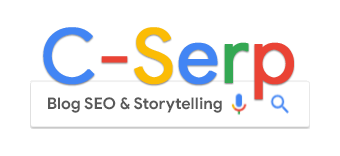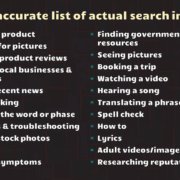There are more than 4 types of search intent

Search intent is easy to define but harder to truly understand.
It’s more than just categories like informational or transactional. It’s about:
- What someone is trying to do in a moment.
- How that action fits into a larger journey.
- How your content and brand meet them there.
If you’re still thinking in linear funnels or rigid personas, it’s time to go deeper.
Rethinking the journey: Why search intent demands more nuance
Before we dive in, let’s step back and ask a few questions:
- Do you have audience personas? A customer journey map? Funnels?
- And more importantly, are those tools still accurate?
- Are they as linear or predictable as they once seemed?
I’m guessing they aren’t linear paths your audience follows the same way each time they engage with your brand from search.
Unless you’re solely focused on branded traffic – typically bottom-of-funnel and ready to convert – you probably care about search intent more broadly.
You likely understand how different behaviors connect to the content you create and the topics you target.
Traditionally, search intent has been divided into a few broad categories.
But with the range of human behavior, the ways people seek information, and ongoing shifts in search and AI, it’s important not to limit your thinking.
In 2023, at MozCon, SEO thought leader Lily Ray made an excellent point: there are actually many more intents.

Inspired by Ray, and with my own perspective expanded, I’ll revisit the commonly accepted intents and share a broader set of examples.
4 most common search intents
Search intent is commonly categorized into four buckets: commercial, transactional, informational, and navigational.
These serve as the four core search intents and the foundation of how many SEOs define a search action.
Commercial intent
Google categorizes commercial intent as pre-transactional searches.
A user intends to buy a product or service, but just needs a little extra convincing. This can include searches that compare features of similar products.
Transactional intent
When a search query aligns with transactional intent, users are primed to purchase and often have a specific product or service in mind.
Informational intent
Informational search intents define search queries that indicate a user who wants to gain further knowledge about something.
Navigational intent
True to its name, navigational intent directs users to specific pages. The pages users search for can range anywhere from a specific social media platform to directories in your local town.
Expanding for all intents and purposes
While those four search intents may broadly cover a sizable portion of queries, they don’t fully represent how users search.
Someone searching for a movie start time at a local theater may not behave the same way as someone looking for movie reviews.
Sure, both are looking for information about a movie, but they are in different stages of the customer journey.
Expanding your understanding of search intent can help refine your engagement and marketing strategies – ultimately improving your understanding of audience segmentation, relevancy, engagement, visibility, and increased conversions.
People often use search engines when they want to:
Compare products
People do their due diligence before making a purchase.
They review pricing, specifications, reviews, and other information about products, brands, and retailers.
Purchase a product
Once the product research and hand-wringing are complete, bottom-funnel searchers will use specific searches to find the exact product they want, often including the store they intend to purchase it from.
Find a store’s nearest location
Search engines are extremely useful for discovering which of the five fast-food burger joints within a two-mile radius of you is closest, has the best reviews, and is open.
Find tutorials or tips
Enthusiasts of various hobbies, such as gardening, photography, cooking, and gaming, use search engines to find tutorials, guides, and communities related to their interests.
Fix a technical problem
When encountering technical issues with devices, software, or appliances, users can search for troubleshooting tips, forums, and support resources to help resolve their problems.
Find entertainment
Users looking for fun and entertaining things to do, such as finding activities or attractions in their city.
Get directions
Whether planning a trip to a friend’s house or a trip cross-country, people use search engines to find accurate directions, maps, and real-time traffic updates to navigate their journeys.
Catch up on current events
When a user wants to know the latest stories or local, national, or international news.
Check the weather
Users can check the temperature, determine whether they will need an umbrella later on, or determine if they need to make backup plans in case their picnic gets rained next weekend.
Cook something delicious
Search engines make it simple to discover new recipes and cooking methods from both amateur blogs and world-renowned chefs.
Expand their brain
Search engines are a primary tool for finding information on almost any topic imaginable.
From historical events to scientific concepts to trivia questions, users can quickly locate relevant articles, websites, and resources.
Do-it-themselves
DIY enthusiasts find guides, tutorials, and tips for various projects, such as home improvement, crafting, gardening, and repairs.
Self-diagnose their symptoms
Before seeking professional advice or visiting a licensed medical practitioner, users can search their symptoms to understand whether they are allergic to something or have come down with a deadly illness.
Understand their neighbor
Language barriers can become much smaller thanks to language translation tools that enable users to quickly translate text, phrases, or entire web pages between different languages.
Play the stock market
Search engines provide access to real-time stock quotes, financial news, investment advice, and resources for managing personal finances and investments.
Find a new job
Job seekers use search engines to find job listings, research companies, access career advice, and prepare for job interviews.
Plan their next trip
Travelers can almost do everything directly from search engines—research destinations, flights, rental cars, and hotels, and find tourist attractions and tips.
Find photos and videos
Users search for images and videos to find visual content related to specific topics, ideas, or projects. This includes finding stock photos, artwork, memes, and video clips.
Identify something they see
Searching using images has never been more advanced, with engines being able to identify flowers, wildlife, furniture, artwork, and more with just a picture.
Listen to a song
Music lovers can discover new music or listen to that song that’s been stuck in their head.
Figure out the lyrics to a song
No matter if users only know one line of the song they heard on the radio or know the title and artist, search engines can show them the lyrics.
Watch the video
Video results allow users to find movie trailers, music videos, tutorials, reviews, news clips, often without even having to leave the search results page.
The ‘what’ and ‘why’ behind a searcher’s query
With AI Overviews at the top of search engine results pages and the emergence of diversified sources of how consumers find information, there’s a lot more interactivity through questions, context, and getting intent right by the searcher/information seeker.
Behaviors are shifting in how people search, in addition to where they search.
We have to keep up and make sure that we’re not too simplistic in how we position our content and our answers or solutions to what searchers are seeking.
Search intent is a key to SEO.
Understanding what and why someone is searching and aligning your brand, content, and engagement opportunities with it is central to SEO.
SEO is hard enough when you have a well-defined target audience and a great strategy and plan.
Your optimization efforts will fail if you do not understand user search intent’s “what” and “why.”
A full understanding and nuanced approach will help you nurture someone through their journey or funnel while also giving you a chance to tell your brand story and further engage them in the process.
Dig deeper. Exploit reveals how and why Google ranks content


